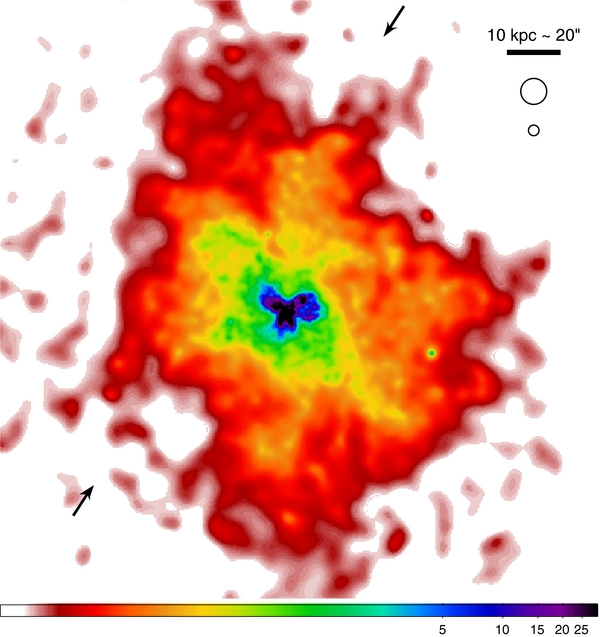
Research Interests
a) the study of the expected feedback from accretion on the SMBH, residing at the center of a galaxy or a galaxy cluster, on the surrounding hot gas. The investigation is expected to give clues on the solution to some well known problems of the "cooling flow" scenario, such as the lack of observed "cooled off" material, the end of the starformation and major nuclear accretion phase in the life of galaxies. See [1].
b) the investigation of the nature of accretion onto SMBHs in the local universe, and of the nature of the accretion energy output, in a radiatively quiescent phase subsequent to the QSO accretion phase. See [2], [3].
c) the investigation of the relationships between the X-ray properties of the sole hot gas (estimated for the first time without contamination from other X-ray sources, for large samples of galaxies) and other fundamental properties of early-type galaxies (luminous and dark mass distribution, internal kinematics, age, shape of the optical surface brightness, radio emission). See also [4].
d) the study of the nature, properties, and origin of the stellar X-ray sources in nearby galaxies (e.g., their X-ray luminosity function gives clues on the star formation hystory and binary formation; super-Eddington sources could give clues on the formation of black holes of intermediate mass). See also [5], [6], and [7].
e) the estimates of temperature and abundance profiles of the hot plasma in clusters, and the derivation of average temperature and metal mass contents, to be linked to their past evolution ([8]).
f) the investigation of the reliability and consequences of the hypothesis of hydrostatic equilibrium for the hot gas, in the derivation of dynamical properties of galaxies ([9] and [10]).

EPIC XMM-Newton image of the Sombrero galaxy in
the 0.5-2 keV band
with superimposed optical contours from the DSS
(Pellegrini et al. 2003).
a) the relation between low luminosity AGNs and bright AGNs on one side, and with "normal" galaxies on the other; this study takes into account the broad band spectral energy distribution of these objects, to derive clues on the accretion modalities. See [11], [12], and Sombrero.
b) the nature of Composite galaxies in which both aspects of starburst (in the optical and infrared band) and AGN (in the X-ray band) are present.
c) the energetics and the recent evolution of the nearby ultraluminous galaxy merger NGC 6240, where, thanks to the high angular resolution of Chandra, the X-ray emission from the pair of active nuclei and the diffuse hot gas is resolved in great detail. The hard X-ray emission indicates the presence of fast shocks, originated in the starburst driven wind, and has a remarkable correspondence to the large scale morphology of H2 line emission and Halpha filaments.

Chandra ACIS-S image of NGC6240.
The filamentary and clumpy nature of the extended soft X-ray emission is clearly visible.
(Nardini et al. 2013).
Last updated November 13, 2013